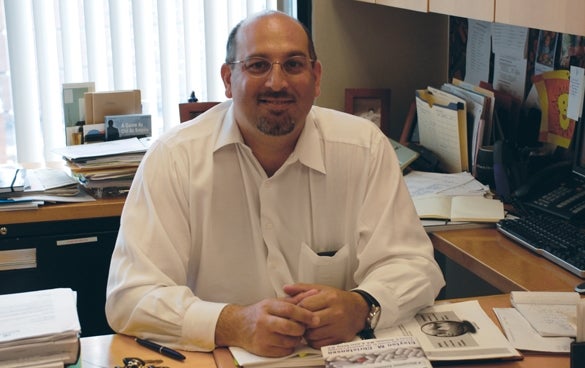Money for startup biotechs sure is hard to come by in this economy. And that means more companies are being forced to consider being acquired in order to survive and bring their products to market.
“Fairly new companies, particularly those in early stage development, are stuck in the position of having to be more resourceful,” said Imran Nasrullah, the Massachusetts Biotechnology Council’s chief business officer.
“Increasingly, everybody is conserving cash and deciding whether to cut back on programs.”
Tight Market
In biotech, medical device and life sciences companies, that is problematic. Their programs are research into drugs or medical devices and are the only things these companies have, he said. If they cut back on them, the chances of them succeeding are greatly reduced.
“It’s not a sustainable strategy to put things on hold,” Nasrullah said.
Despite the tightened purse strings of venture capitalists, investors remain very interested in biotechnology. After all, the recently released quarterly Price-waterhouseCoopers MoneyTree report on VC funding for the second quarter of 2009 shows that biotechnology was still the largest single industry category for that period.
The report showed that $1.5 billion went into 260 deals across the country.
Based on current trends, the report projects VC funding for the whole year will probably mirror the levels seen in 1996 and 1997, when funding ranged from $11 billion to $14 billion.
So what options are available to young companies?
For some it means focusing less on interesting angel or venture capital money and more on partnering with or being acquired by a bigger pharmaceutical or biotechnology company.
“In a go-go economy, financing may be a better choice than partnering in the short-term with a bigger company to develop a drug,” said Robert “Duffy” DuFresne, CEO of Ischemix LLC, a small biotech company in Maynard. “It’s a challenging financial environment right now. The impact of that is that it changes the balance between the desirability of partnering with another company or selling the company versus finding the next stage of financing.”
Ischemix researchers have developed a small molecule that acts as a dual-action drug. It blocks oxygen-free radicals and calcium overload, which are the primary causes of muscle damage during and following a heart attack.
DuFresne said his company has talked with larger companies about partnering with them to bring the drug to market, or to be acquired by them. But either of those scenarios is possible only if the company sees a positive outcome of its Phase II clinical trials. If the trial goes well, the results make the company more attractive, he said.
“We’re living in more economically constrained times, but there is a huge need for pharma companies to add attractive programs to their drug pipelines,” DuFresne said.
Patent periods coming due may be driving some of that acquisition and partnering as well.
“Driving the move for a lot of acquisitions of smaller biotechs by big pharma is the fact that a lot of their billion-dollar drugs are coming off patent and that means revenues are falling,” said the MBC’s Nasrullah. Once the patent for a drug ends, generic drug makers can begin entering the market, and they usually do, he said.
The council has instituted a matchmaking program to help both large biotech and pharma companies as well as the smaller biotech companies.
“It’s sort of like speed dating,” Nasrullah said. “We bring all the buyers and sellers together in one place. It’s much more cost effective for big companies than sending teams out all across the country. It’s one stop shopping.”
Nonprofit Route
Very early stage companies have found another way to keep going while awaiting grant money.
“Another option is for companies to partner with disease foundations which are actively investing in small biotech companies,” Nasrullah said.
Local entrepreneur Bradley L. Hodges, with a small biotech called Prothelia Inc. in Milford, has gotten help from a patient advocacy organization to keep going before federal grants kick in this summer. He is working to commercialize a small molecule protein that he believes will help children with muscular dystrophy.
He knew long before he quit his job as a researcher at Genzyme Corp. in Framingham that he would pursue a muscular dystrophy treatment and began communicating early on with nonprofits like the Muscular Dystrophy Association and the Parent Project Muscular Dystrophy, both advocacy and education groups.
Late last year the Parent Project agreed to fund his salary from January to May this year. He could then focus on writing additional grants as he waited for his first two Small Business Innovation Research grants from the federal National Institute of Health. Those two grants total $500,000 and should start any week, he said.
“Because I had my own skin in the game I think they saw me as a good risk,” Hodges said, adding that they knew he had almost exhausted his 401(k) retirement money to get the company started. “It may not have been a lot of money, but it let me keep going.”
Some organizations like the Muscular Dystrophy Association Venture Philanthropy, a spinoff of the MDA, are investing more in small biotech companies to get potential treatments to market more quickly.
While these alternatives to venture capital are necessary to keep small biotech companies going, it doesn’t mean that there isn’t any VC activity. It just means that there is less of it.
Long River Ventures, a small venture capital fund with offices in Worcester and Hadley, participated with other investors in a second quarter, $8 million investment in a Worcester company, Verax Biomedical Inc.
Verax produces a test that quickly determines whether blood supplies are contaminated.
“We’re very busy investing; we think this is a great time to be investing,” said Will Cowen, a Long River partner.
“And there are scrappy entrepreneurs who will find a way to advance their company regardless of the economy.”

